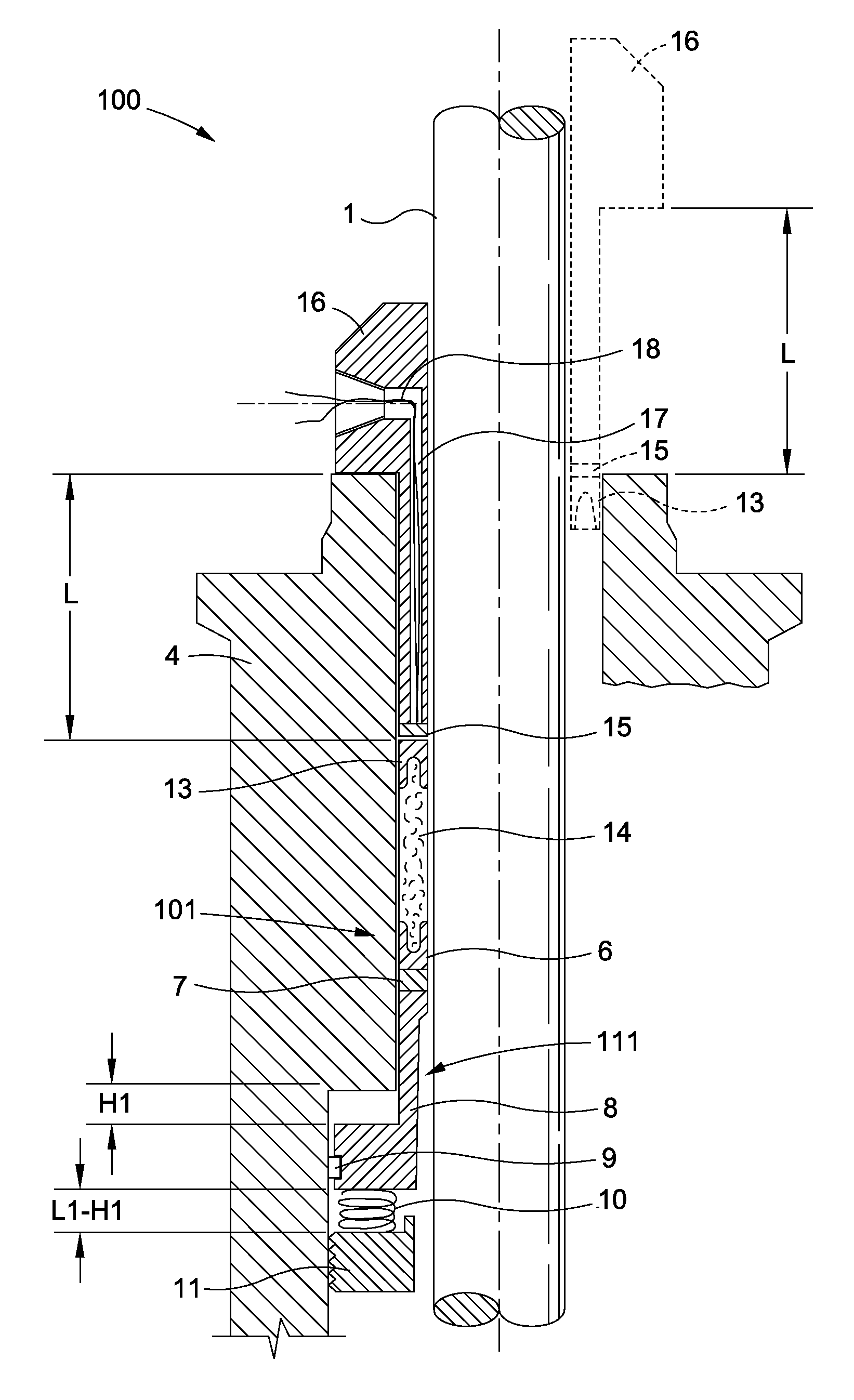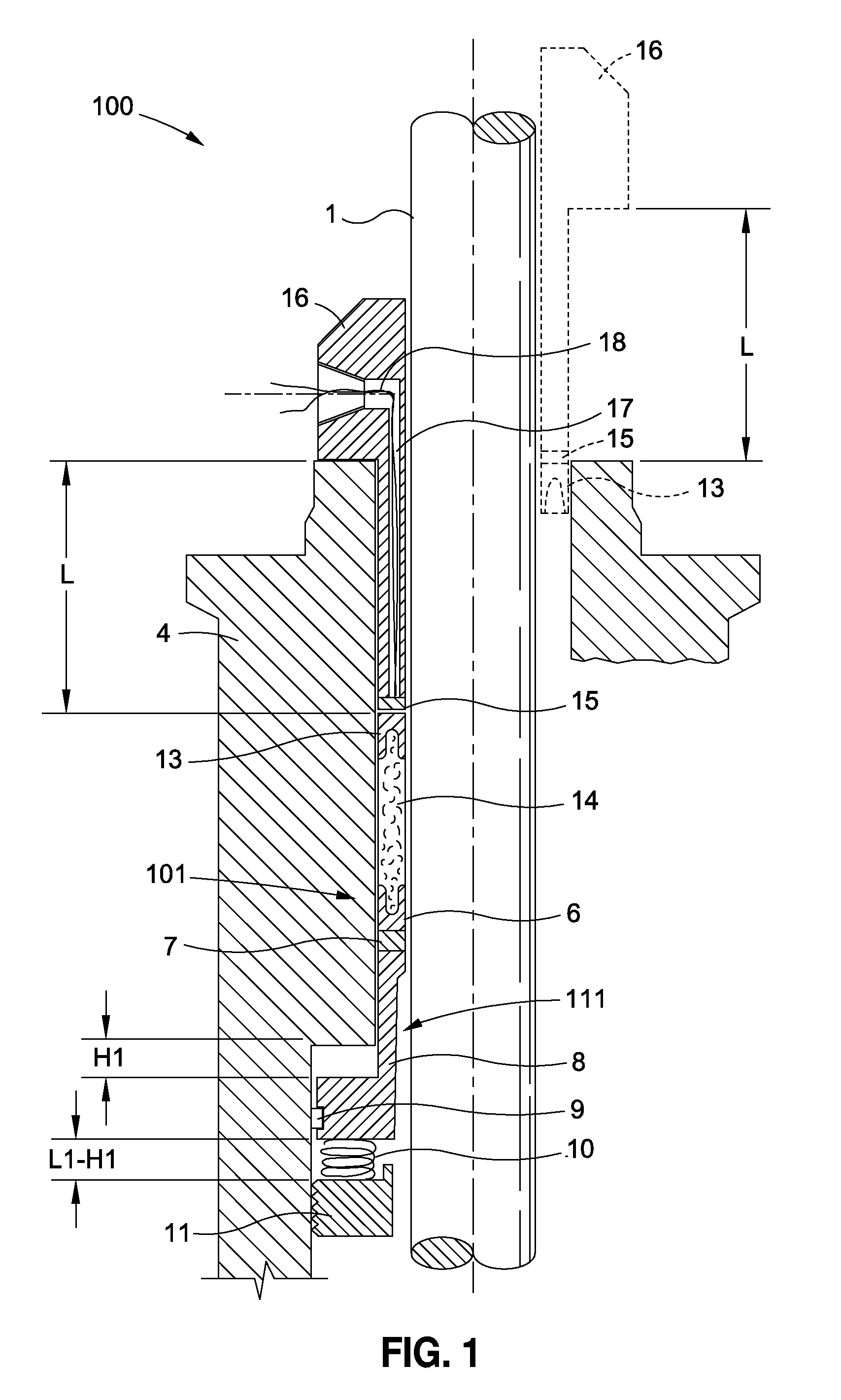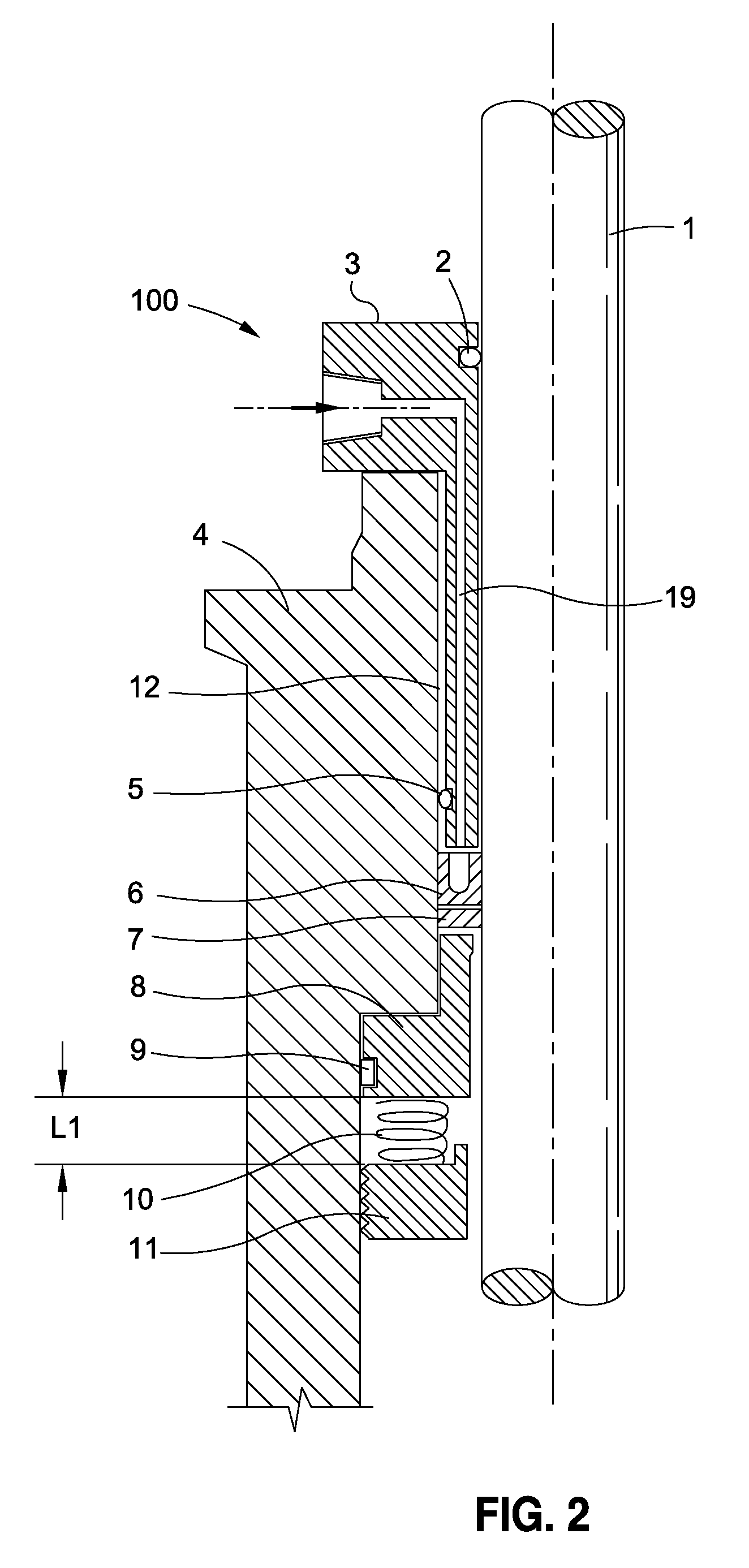Low diffusivity barrier fluid packing system
a technology of fluid packing and low diffusivity, which is applied in the direction of valve operating means/release devices, valve bends, transportation and packaging, etc., can solve the problems of the valve stem sticking to the stem, the packing system, and the valve stem being susceptible to varying levels of leakage, so as to reduce the leakage level, reduce the voc emission, and limit the diffusivity of gas
- Summary
- Abstract
- Description
- Claims
- Application Information
AI Technical Summary
Benefits of technology
Problems solved by technology
Method used
Image
Examples
first embodiment
[0020]Referring now to the drawings wherein the showings are for purposes of illustrating preferred embodiments of the present invention only, and not for purposes of limiting the same, FIGS. 1 and 2 partially depict an exemplary valve 100 which includes a low fugitive emission, fluid or liquid barrier packing system 101 constructed in accordance with the present invention. The exemplary valve 100 having the packing system 101 integrated therein possesses certain structural features. More particularly, the valve 100 includes a body, which itself comprises a valve bonnet 4. Extending axially through the valve bonnet 4 is a central passageway 12. As seen in FIGS. 1 and 2, the passageway 12 extending through the valve bonnet 4 is not of uniform inner diameter. Rather, the passageway 12 is divided into an upper section which is of the first inner diameter, and a lower section which is of a second inner diameter exceeding that of the upper section. As a result, the upper and lower sectio...
second embodiment
[0025]The packing system 101 further comprises an annular load sensor or load cell 15 which is positioned upon and directly abuts the upper packing 13. As such, the load cell 15 also resides within the upper section of the passageway 12 within the annular gap defined between the valve stem 1 and the valve bonnet 4. The load cell 15 is effectively captured between the upper packing 13 and a packing follower 16 which is also included in the packing system 101. As seen in and as viewed from the perspective shown in FIG. 1, the packing follower 16 includes an annular upper section which is of a first outer diameter, and a tubular lower section which protrudes from the upper section and is of a second outer diameter less than that of the first outer diameter of the upper section. As a result, the upper and lower sections of the packing follower 16 are separated by an annular shoulder. The lower section is also of the length L shown in FIG. 1. The packing follower 16 further defines a cen...
PUM
| Property | Measurement | Unit |
|---|---|---|
| pressure | aaaaa | aaaaa |
| viscous | aaaaa | aaaaa |
| outer diameter | aaaaa | aaaaa |
Abstract
Description
Claims
Application Information
 Login to View More
Login to View More - R&D
- Intellectual Property
- Life Sciences
- Materials
- Tech Scout
- Unparalleled Data Quality
- Higher Quality Content
- 60% Fewer Hallucinations
Browse by: Latest US Patents, China's latest patents, Technical Efficacy Thesaurus, Application Domain, Technology Topic, Popular Technical Reports.
© 2025 PatSnap. All rights reserved.Legal|Privacy policy|Modern Slavery Act Transparency Statement|Sitemap|About US| Contact US: help@patsnap.com



